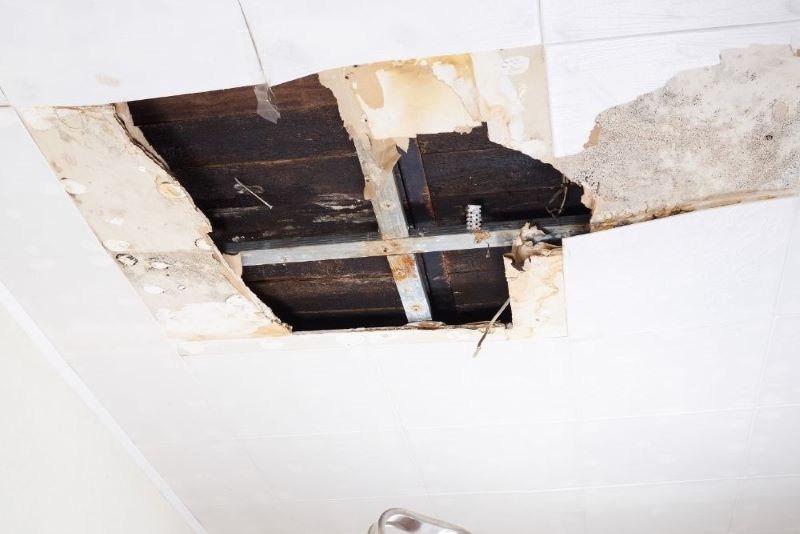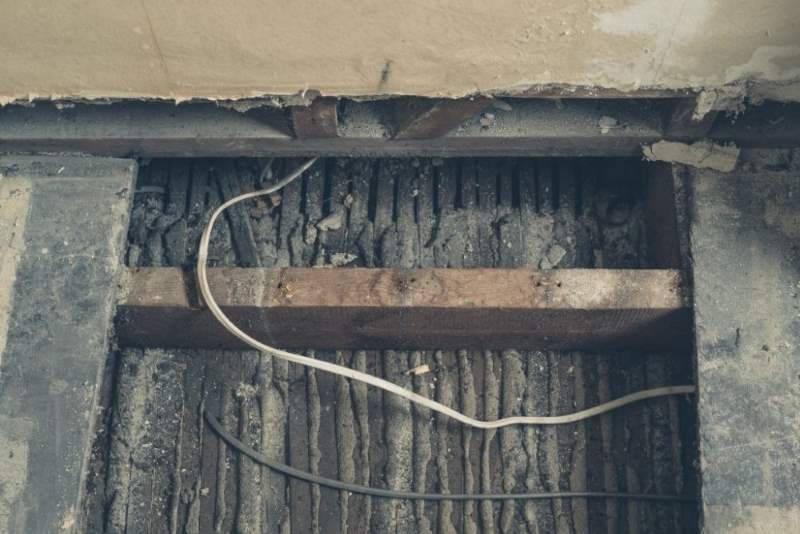Every type of structure, whether residential or commercial, needs floor joists. Your floorboards would collapse under your feet if they weren’t there. By supporting the floor, these wooden beams help buildings retain their structural integrity and provide proper weight distribution.
Floor joists are vulnerable to water damage from burst pipes, flooding, and other sources, just like the flooring itself. You can save money by repairing the damaged area before it becomes too serious. Now, let’s learn how to repair floor joists with water damage.
What Are Floor Joists?
The crawl space or basement are examples of areas of the house that have exposed floor joists. Typically, solid lumber is used to make floor joists. Because they are made of wood, they are vulnerable to water damage from many kinds of typical sources. The joists may suffer from wood rot and mold growth, among other types of damage, as a result of excessive moisture or high humidity.
It is impossible to overstate how important it is to keep floor joints in good shape. They affect the flooring’s level and provide support for the whole foundation of the flooring. Joint damage can result in several problems, including stuck doors, cracked drywall, and other types of damage to the house.
Guide On How To Repair Floor Joists With Water Damage
Do you intend to do your floor joist repairs? For optimal outcomes, adhere to these five steps to know how to repair floor joists with water damage.
Step #1: Stop Any Moisture Or Water From Seeping In
Floor joists that have been damaged by water cannot be repaired especially if this problem persists. Look for the water or moisture source and make sure the flow has stopped.
Step #2: Go To The Joist
The easiest way to prevent breaking the subfloor’s integrity or causing damage to the flooring is to access the joist from the basement or crawlspace. If this isn’t possible, you might have to access the joist by removing the ceiling or the flooring from above or below.
Step #3: Install A Temporary Support Beam
Two or more floor jacks are required to install a temporary beam that supports the floor while the joists are being repaired. For further safety and stability, fasten the beam, if necessary, to the floor joists at their base.
Step #4: Sister The Joist
A piece of wood with comparable dimensions, type, and size is required. Longer is preferable when cutting it to ensure that there is enough overlap with the portion that isn’t rotten. Use strong structural steel carriage bolts for maximum security when fastening the sister joist into place.
Step #5: Replace Or Remove The Decaying Part
If you have eliminated the infestation, you won’t always need to remove the decaying part. If there is extensive decay in the joist, make two vertical incisions in it and use a pry bar to remove the decaying part away from the subfloor. Take it out and replace it with a similar-sized type of lumber part. Bolt the new piece into place using structural steel plates.
Causes Of Water Damage On Floor Joists

After knowing how to repair floor joists with water damage you most likely wonder what damages floor joists. Joists don’t just decay on their own, after all. The following are the most common causes why floor joists decay:
Gutter Problems
You should have the appropriate slope for your downspouts. Water will not drain properly and will start to collect around the base of the house if your slope is not right. It will eventually leak through your slabs and into your crawl space since all of this water needs to get somewhere.
Pest Infestations
Certainly, decay in floor joists can also be caused by pests. Termites and other pests may build a long-term camp in your house without you noticing. It will already be too late when they are. In the worst situation, you should get in touch with a professional exterminator if there’s a pest infestation.
Replace the damaged wood only once you are positive the infestation is eradicated; otherwise, you are giving the pests a four-course supper.
Standing Water
Pipes run throughout your house. A ruptured pipe might cause disastrous damage. Unchecked burst pipes can result in the growth of mold, decay, and mildew. A regular inspection for indications of standing water or decaying floor joists should be done in your crawl space.
You should get in touch with a professional to have your joists, foundation, flooring, and other parts of the house inspected if you discover standing water.
Wood Decay
One of the main reasons professionals recommend homeowners to take care of mold problems as soon as they are noticed is wood decay. The warm, humid atmosphere created by a recent flood or leak in your crawl space is ideal for the growth of mold. Your wood beams will split as the fungus spreads and becomes a fruiting body in your floor joists from absorbing too much moisture.
Ways For Preventing Wood Decay
Wood decay can sometimes be prevented. Incorporating adjustments and being extra cautious can help prevent decaying floor joists most of the time. Here are ways to prevent the decay of wood in your house:
Crawl Space Sealing
Although it may sound sophisticated, crawl space sealing or encapsulation is just installing a vapor barrier in your crawl space. The impermeable polyethylene used to make this vapor barrier keeps humidity levels low and prevents excess moisture.
Install A Pump
A pump clears your crawl space or basement from excess water. Without one, water will keep building up and can cause major problems, such as decaying floor joists.
Invest In A Dehumidifier
If you don’t have a vented crawl space, a dehumidifier is a fantastic solution. To help with air circulation and humidity reduction, install a dehumidifier in your enclosed crawl space.

